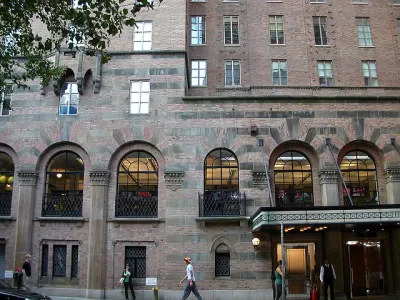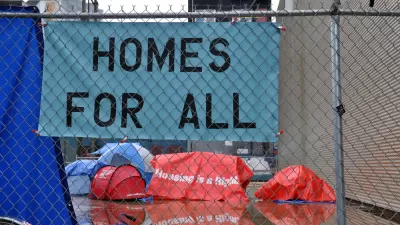A New York Times feature details the re-emergence of the single room occupancy (SRO) unit in the New York rental market. Despite a stigma and an old-fashioned quality, the SRO is becoming a badly needed housing solution.

New York City's rental market "is moving toward a rent-by-the-room model," according to an article by Kim Velsey, as "a response to the imbalance between New York’s large single population and the prohibitively high cost of living alone, and, perhaps not coincidentally, a model that thrived in the last century."
"Although only buildings zoned for single room occupancy, or S.R.O.s, can rent by the room, the market has increasingly found ways to legally — and not so legally — accommodate those seeking rooms rather than apartments," explains Velsey.
"Alternatives range from relatively low-cost apartment shares, wherein brokers represent apartments with multiple bedrooms and help renters find roommates to bring the cost per person down to as low as $650 a month, to luxurious, all-inclusive shared suites in co-living developments, where rooms are priced at as much as $2,900 a month," Velsey adds.
The article includes multiple anecdotes of renters navigating the new/old rental market, and some of the new business models and development models that have sprung up in response to the need for affordable rental housing.
The article also includes details of the rooms-for-rent model of New York's past. It was only the end of World War II, for instance when rooms-for-rent hit a peak in the city at 200,000 available units (currently the city has 35,000 SROs). Luminaries such as Grace Kelly, Liza Minnelli, and Joan Didion all once lived in one particular famous example of a SRO boarding house—the Barbizon Hotel.
FULL STORY: Return of the S.R.O., With a Twist

Maui's Vacation Rental Debate Turns Ugly
Verbal attacks, misinformation campaigns and fistfights plague a high-stakes debate to convert thousands of vacation rentals into long-term housing.

Planetizen Federal Action Tracker
A weekly monitor of how Trump’s orders and actions are impacting planners and planning in America.

In Urban Planning, AI Prompting Could be the New Design Thinking
Creativity has long been key to great urban design. What if we see AI as our new creative partner?

Researchers Use AI to Get Clearer Picture of US Housing
Analysts are using artificial intelligence to supercharge their research by allowing them to comb through data faster. Though these AI tools can be error prone, they save time and housing researchers are optimistic about the future.

Making Shared Micromobility More Inclusive
Cities and shared mobility system operators can do more to include people with disabilities in planning and operations, per a new report.

Car Designs Make it Harder to See Pedestrians
Blind spots created by thicker pillars built to withstand rollover crashes are creating dangerous conditions for people outside vehicles.
Urban Design for Planners 1: Software Tools
This six-course series explores essential urban design concepts using open source software and equips planners with the tools they need to participate fully in the urban design process.
Planning for Universal Design
Learn the tools for implementing Universal Design in planning regulations.
Appalachian Highlands Housing Partners
Gallatin County Department of Planning & Community Development
Heyer Gruel & Associates PA
Mpact (founded as Rail~Volution)
City of Camden Redevelopment Agency
City of Astoria
City of Portland
City of Laramie





























